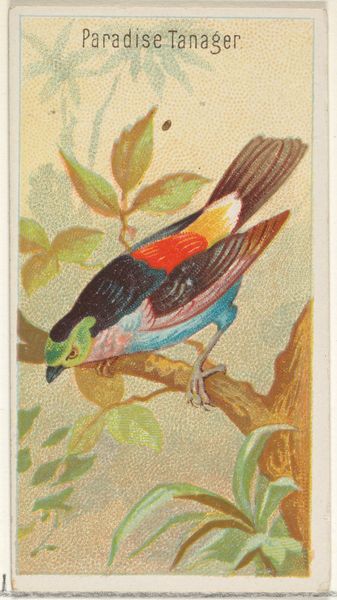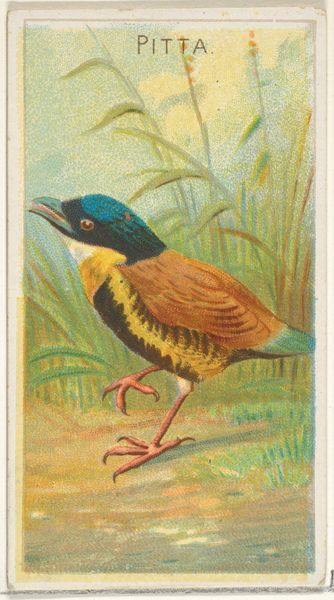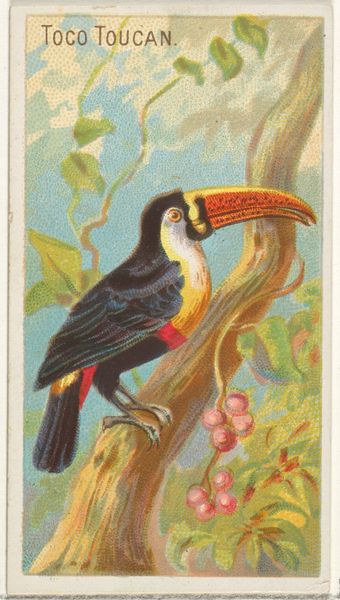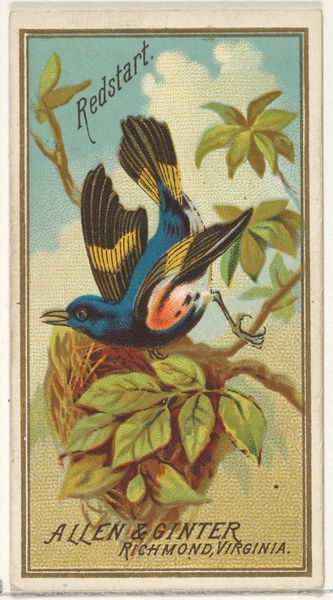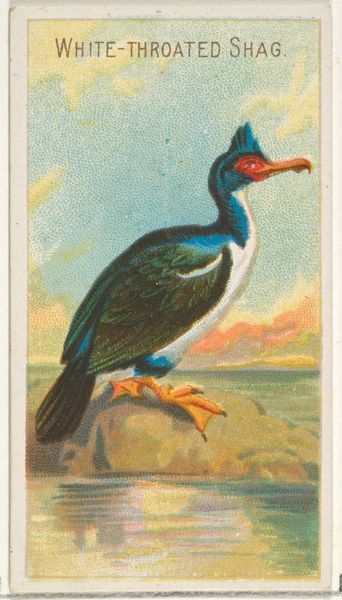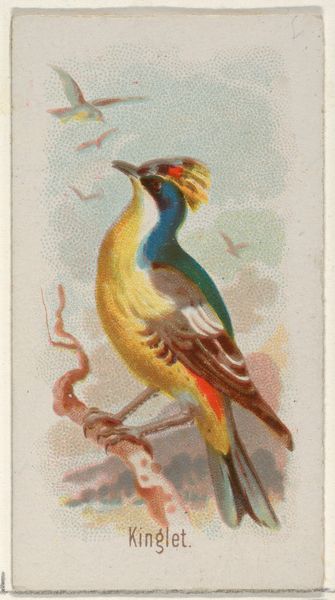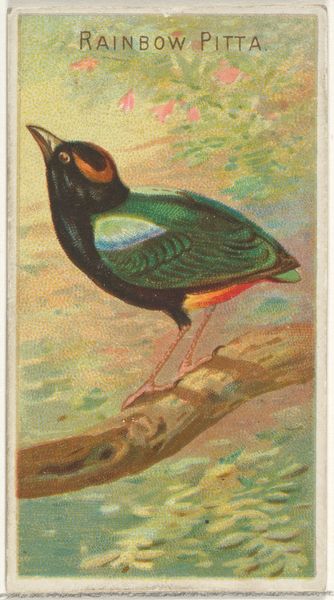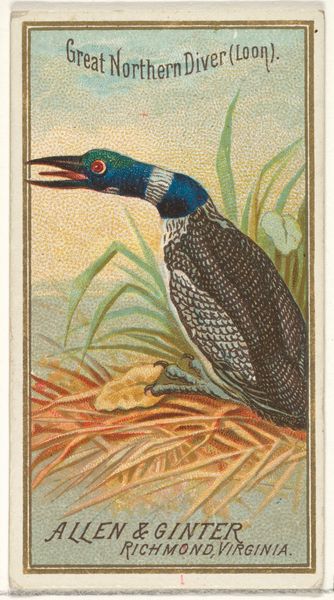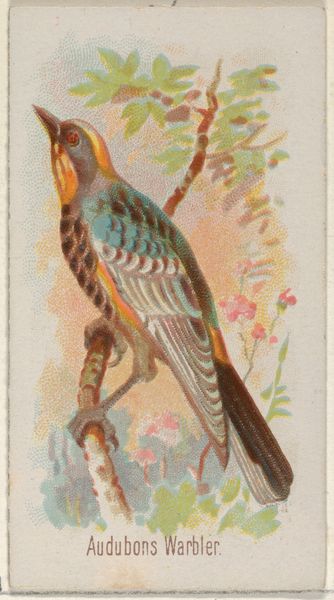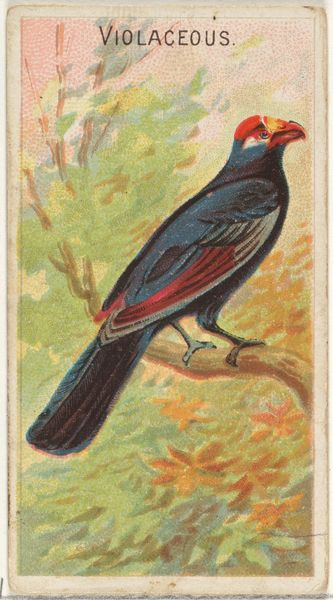
Kingfisher, from the Birds of America series (N4) for Allen & Ginter Cigarettes Brands 1888
0:00
0:00
Dimensions: Sheet: 2 3/4 x 1 1/2 in. (7 x 3.8 cm)
Copyright: Public Domain
Curator: This delightful card features a Kingfisher, dating back to 1888. It's part of the Birds of America series produced by Allen & Ginter for their cigarette brands, and we have it on display here thanks to the Metropolitan Museum of Art. Editor: It's visually striking, the sharpness of the Kingfisher itself placed against this hazy, dreamlike background is especially eye-catching, isn't it? Curator: Absolutely. The kingfisher is a bird steeped in mythology, linked to calm seas and good fortune. But the way it's depicted here, within the context of a cigarette card, also speaks to the rise of consumer culture and how even symbols of nature were being commodified. Editor: Precisely, note how the line of sight guides our vision from the Kingfisher up the artwork into its name, and further downward to "Allen & Ginter", so while it's part of the 'Birds of America' collection, and therefore has ties with ideas of national identity and nature, it simultaneously serves its true role as advertising, hence that extremely modern composition! It reflects the visual priorities of late 19th century advertising, I think. Curator: I can see that, it even almost mirrors a family crest of old, where instead of the family name, the corporate identity is strategically put at the very base! The image itself, though quite stylized, still retains a sense of the bird's powerful presence. Kingfishers are known for their fierce hunting skills, so there’s a paradox at play between representing nature and consumerist marketing here. The composition has ties with 'ukiyo-e' as well as art nouveau design! Editor: A fascinating contrast is struck with its framing too. The use of coloured pencils gives this print the texture of Impressionism which softens that fierceness a little and also contributes to this somewhat subdued mood you mentioned. Its subdued execution provides a counterpoint to the Kingfisher’s vivid colours and immediate graphic impact. Curator: Yes! I’m left thinking about how these images helped shape people’s understanding and appreciation of the natural world at that time. Were they actually looking at nature itself or filtered views influenced by cultural needs and advertisement imperatives? Editor: And, how that filtering impacts our visual language and understanding of symbols today! Fascinating.
Comments
No comments
Be the first to comment and join the conversation on the ultimate creative platform.

